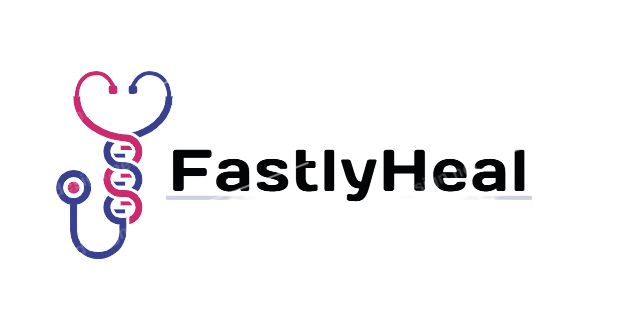Finding a lump in the breast is alarming for any woman who automatically raises the fear of having breast cancer. However, it is essential to note that most of the lumps found in the breasts are not cancer. Although they must be explored by a medical specialist, in most cases, this lump is usually the result of fibrocystic changes in the tissue. Mammary. So in the face of this discovery, it is best to be patient and remain calm.
The tissue that makes up the mammary glands can undergo many transformations. Even its consistency can vary depending on the menstrual cycle phase in which the woman is. Most of these alterations are not tumorous, and when they are, they are not usually breast cancer. Many conditions are associated with the formation of a lump in the breast. To know them, we invite you to continue reading this article by FastlyHealabout hunk in the breast: causes and solutions.
Table of Contents
Fibrocystic breasts
Fibrocystic mastopathy is a benign condition that causes the breast to become lumpy due to the overgrowth of breast tissue. This disease is not associated with breast cancer and is more common in women of childbearing age, although it can also appear after menopause. It is enough to touch her breasts and feel the fibrous tissue and small lumps (cysts) that can be painful to diagnose that a woman has fibrocystic breasts. The pain can generally appear in one or both breasts and during any menstrual cycle phase; however, the discomfort is usually more intense during the rule.
It is also possible that the woman feels itching, burning, pain in the armpits, discomfort when wearing the bra, and sporadically the nipple presents a clear discharge that can be creamy, white, or greenish but not bloody. Women with this condition must perform a self-exam of the breasts in a disciplined way to verify that no new masses have been presented or that certain lumps have increased in size.
Usually, the breasts become fibrocystic due to changes in a woman’s hormonal processes associated with pregnancy, lactation, menopause, breast implants, birth control pills, and the hormone replacement therapy used to treat the climacteric symptoms.
Treatment for fibrocystic mastopathy
This condition has no cure and does not suggest any risk to a woman’s health beyond the symptoms it offers. Women with fibrocystic breasts are recommended to reduce caffeine consumption for a few months and take non-steroidal analgesics in case of acute pain. Proper hydration to avoid fluid retention is also important in caring for these breasts.
Cysts in the breasts
Cysts are small lumps of water that are more common in women with fibrocystic breasts and are one of the most common causes of a bump in the breast. Unlike tumors, cysts are smooth, their size can vary, and they travel throughout the breast. Sometimes the cysts can be so small that they are indistinguishable to the touch and are only evident on a breast ultrasound or mammogram. These types of masses do not always cause pain, and when they are found, it is essential to perform a puncture to know what their interior is composed of.
Treatment of breast cysts
Cysts that appear in the breasts are usually benign conditions that do not cause any risk to the woman’s health. However, once the lump is found in the breast, it is crucial to perform advanced studies such as a mammogram or puncture to analyze the shape and content of the cyst. Cysts are usually not removed, and in some cases, medications may be prescribed to treat pain and symptoms. Surgery is a rare option.
Fibroadenomas in the breasts
These benign tumors appear in the breasts and are not associated with cancer. They arise due to the excessive, abnormal, and rapid growth of the cells of the breast cells and are recognized because they feel like a hardball that, unlike cysts, are not filled with water but instead form a solid mass.
Fibroadenomas can also cause pain, and, unlike malignant tumors, they do not spread to other parts of the body. When the cancer is large, it can change the size and shape of the breast, and depending on its location, it may or may not cause discharge from the nipple. These masses are usually composed of breast tissue, move quickly under the skin, without firm, elastic, have smooth and defined edges,
Treatment of fibroadenomas
The only way to diagnose a benign tumor is to biopsy the lump in the breast. During this procedure, part or all of the bubble will be removed to examine its composition under a microscope. When the biopsy is routine, the doctor and the woman must decide whether or not to remove the tumor through surgery to relieve the pain that the mass may be causing. When the cancer is not removed, it is necessary to study it annually through mammography, ultrasound, and physical examination.
Breast cancer
Breast cancer is a malignant tumor that forms in the breast tissue and, according to the World Health Organization, represents 16% of all female cancers. The malignant tumor does not present symptoms. It is a mass with irregular edges and is very hard that may be accompanied by changes in the nipple and the shape of the breast, redness, skin similar to orange peel, and yellowish or yellowish greenish discharge identical to the pus through the nipple.
In its initial phase, breast cancer does not usually present any symptoms other than the presence of a lump in the breast or the armpit. For this reason, it is so essential to self-examine the breasts once a month, preferably five days after the arrival of the period. The earlier the diagnosis of this disease is carried out, the better the prognosis for a cure. The following article explains the steps to doing a breast self-exam. Different types of malignant tumors can form in the breasts. If you want to know more details about this pathology, we invite you to read our article Breast cancer: types, symptoms, and treatment.
Breast cancer treatment
Treatment of breast cancer will depend on the type of tumor, the degree of the disease, the sensitivity of cancer to hormones, or whether cancer has produced the HER2 / neu gene in the body. However, this type of cancer is usually treated as follows:
- Chemotherapy: giving drugs through a vein to destroy cells.
- Radiation therapy: application of radiation to the breast in and around the tumor area to destroy cancerous tissue.
- Surgery: to remove the tumor or empty the breast partially or entirely. The surgery to be performed will depend on the person’s needs, the stage of cancer, and the size of the tumor.
- Hormone therapy: drugs to prevent tumor growth from spreading. It is also prescribed to avoid the appearance of a new tumor during the remission period.
What to do when discovering a small ball in the chest?
The first thing you should do is keep calm and avoid thinking that you have cancer. Remember that, as we mentioned at the beginning of this article: most of the masses found in the breasts are benign and are not associated with breast cancer. In the presence of a lump in the breast, the right thing to do is immediately meet with your gynecologist to physically examine your breasts and prescribe the necessary studies to evaluate the mass and thus obtain an accurate and adequate diagnosis.
This article is merely informative. At FastlyHeal .com, we do not have the power to prescribe medical treatments or make any diagnosis. We invite you to see a doctor if you present any condition or discomfort.
If you want to read more articles similar to Lump in the breast: causes and solutions, we recommend that you enter our category of Female reproductive system.

I am a Surgeon with a diploma in comprehensive ultrasound and surgical care residency, an area I am specializing in. During the exercise of my profession, I have realized the need for patients to know the diseases they suffer, and I can tell you that a large part of their complications is due to a lack of information. Being a health web writer allows me to transmit my experience, without borders, to all those readers eager for knowledge, educate them in the prevention of diseases and promote a healthy lifestyle.
